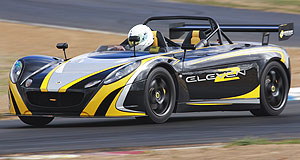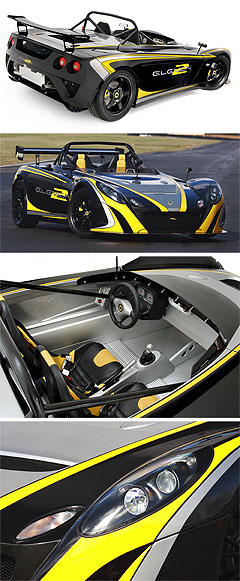First drive: 2-Eleven assumes wilder Lotus position
BY JAMES STANFORD | 28th Apr 2008

While special legislation allows for extreme vehicles such as the 2-Eleven to be registered in England, it remains a track-only special in Australia.
Lotus Cars Australia sales and marketing manager Jonathan Stretton said the 2-Eleven is an extremely fast race car perfect for ‘weekend warriors’.
“It is a very capable, easy to use track car that gives you an experience that is very close to that of an open-wheeler race car,” he said.
The 2-Eleven is based on the same chassis as the Elise and Exige, which is made of extruded aluminium that is bonded together, and a steel rear subframe.
All of this weighs just 68kg.

Weight is saved by the fact there are no doors or even a bonnet to worry about. As such, the bodyshell weighs just 40kg.
All body panels are bolted on and can be easily removed and repaired if the driver has a meeting with another car or tyre wall.
Providing the power is a supercharged version of the 2-ZZ 1.8-litre Toyota four-cylinder, a naturally-aspirated version of which served in the now-deceased Celica and MR2.
The engine in the 2-Eleven is similar to the unit used in the Exige S, but there are some variances. For the record, this set-up is different to the just-released Elise SC, which doesn’t use an intercooler and is tuned for more progressive power delivery.
The supercharged engine in the 2-Eleven, which is located behind the driver and passenger, runs a larger intercooler that helps it pump out 188kW at 8000rpm, which is 16 per cent more than the Exige S.
Torque comes in at 13 per cent more than the Exige S, hitting 242Nm at 7000rpm. In fact, the 2-Eleven weighs just 745kg, which is light enough to give it a power-to-weight ratio that Lotus says rivals Formula One cars of the 1960s.
It is light enough and powerful enough to blast to 100km/h in just 3.9 seconds, which is up there with some of the best supercars - and makes the 2-Eleven the quickest Lotus ever sold to the public. It has a top speed of close to 250km/h - the same speed that the 1991 Lotus Carlton was electronically-limited to.
The weight is distributed 38 per cent to the front and 62 per cent to the rear and a close ratio six-speed manual gearbox is standard. Lotus has fitted the 2-Eleven with traction control, but it is not any old traction system.
The 2-Eleven uses an adjustable traction control with a rotary dial that allows drivers to pick the exact level of traction assistance (from 18 choices) they would like, depending on the track conditions.
It also uses a launch control system specifically designed for the track. This means it can be set before the race at whichever rev-point the driver chooses.
The 2-Eleven comes with lightweight forged alloy wheels - 16-inch on the front and 17-inch on the rear - and sticky Yokohama tyres specifically designed for the car.
Braking power is provided by AP Racing four-piston callipers at the front and single-piston callipers at the rear.
The 2-Eleven comes with Ohlins adjustable coil-over shock absorbers and an adjustable front sway bar. There is also a strengthened rear suspension brace that is designed to better cope with kerb-hopping.
Lotus has also designed unique steering arms and front upper whishbones to suit the 2-Eleven’s super-low ride height.
The interior of the 2-Eleven is bare, with no creature comforts like air-conditioning or a sound system. There is no dashboard as such, with an instrument cluster set on the aluminum firewall.
The 2-Eleven will most often be raced by one person, but can take a passenger. Two ProBax racing seats with mounting points for a four-point harness are standard, as is an FIA-compliant six-point rollcage.